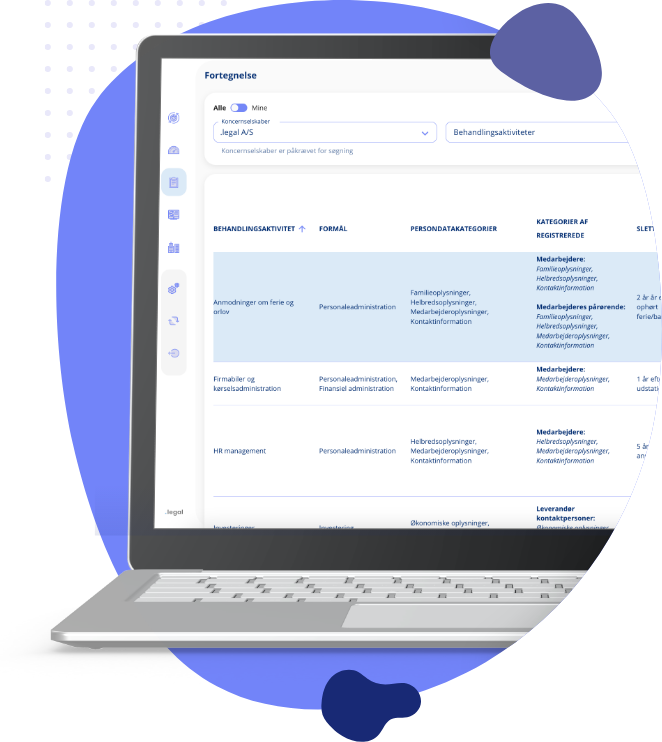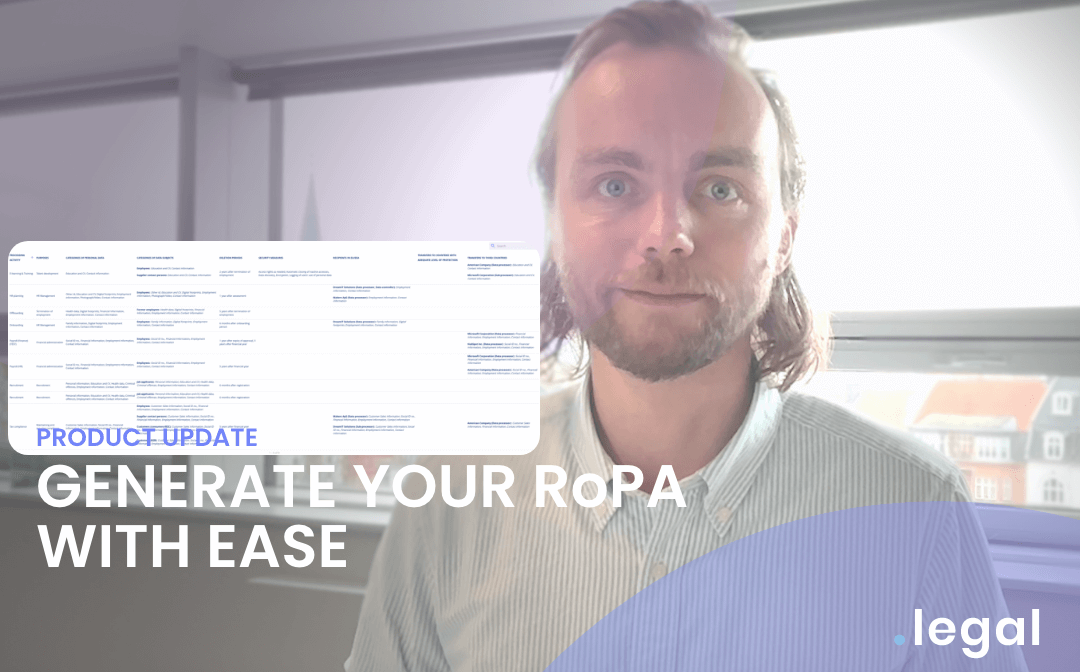
GDPR & Privacy Draw a record of your processing activities
If your company or organisation processes personal data, you must draw a record of your processing activities. A record is a report, you e.g. must be able to present to the Danish Data Protection Agency, from which it is described which processing activities you carry out in your company.
The regulation describes two types of records: article 30.1 as a data controller and article 30.2 as a data processor. If you also act as a data processor, you must draw both types of records.
-
Record for data controllers
An article 30.1 record should contain the following information
-
Name and contact information of the data controller
-
The purposes of the processing
-
Categories of data subjects and categories of personal data
-
Categories of recipients by transmission
-
Transfers to third countries and international organisations
-
Deletion periods for the different categories of information
-
Description of technical and organisational measures if possible
-
-
Record for data processors
An article 30.2 record should contain the following information
-
Name and contact information of the data processor and the data controller on whose behalf the data processor is acting
-
Categories of processings carried out on behalf of the data controller
-
Transfers to a third country or an international organisation
-
Description of technical and organisational measures if possible
-
Advantages of Maintaining a Record of Processing Activities
-
Enhanced Data Protection Compliance: A comprehensive record helps ensure compliance with data protection laws and regulations, including GDPR. It demonstrates your commitment to data protection and makes it easier to respond to requests from regulatory authorities, such as the Danish Data Protection Agency.
-
Improved Data Management: Regularly updating your record of processing activities allows you to monitor and better understand the flow of personal data within your organization. This can lead to more efficient data management and help you identify areas where data processing can be optimized or streamlined.
-
Strengthened Accountability: Maintaining a record of processing activities fosters a culture of accountability within your organization. It encourages all team members to take responsibility for the personal data they process and underscores the importance of data protection.
-
Simplified Risk Assessment: A detailed record can help you identify potential risks and vulnerabilities in your data processing activities. This enables you to take proactive measures to mitigate these risks and protect the personal data of your customers and clients.
Info
.legal A/S
hello@dotlegal.com
+45 7027 0127
VAT-no: DK40888888
Support
support@dotlegal.com
+45 7027 0127
Need help?
Let me help you get started

+45 7027 0127 and I'll get you started
.legal is not a law firm and is therefore not under the supervision of the Bar Council.





.jpg)

.jpeg)

.jpg)
.jpg)




.jpg)

-1.png)



.jpeg)





